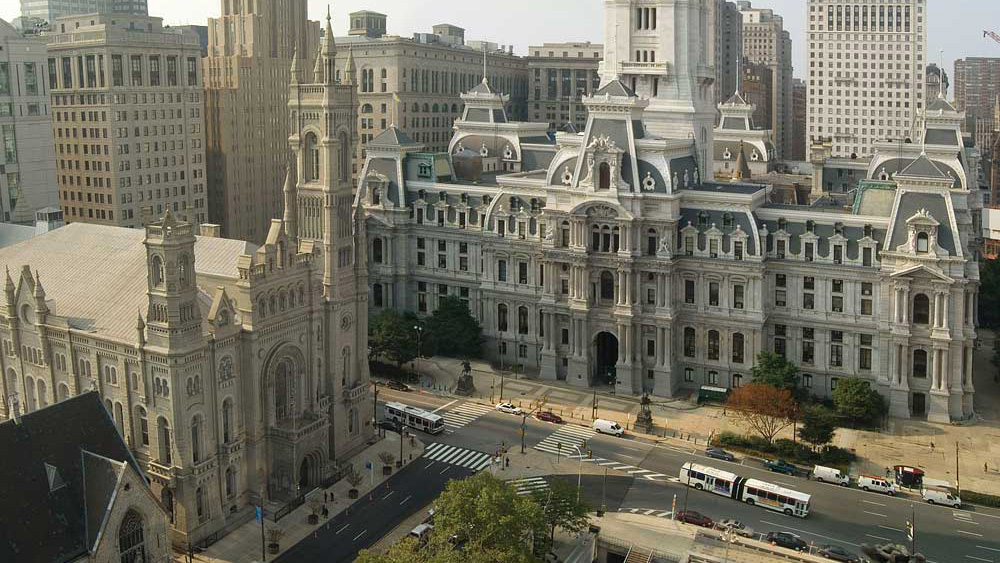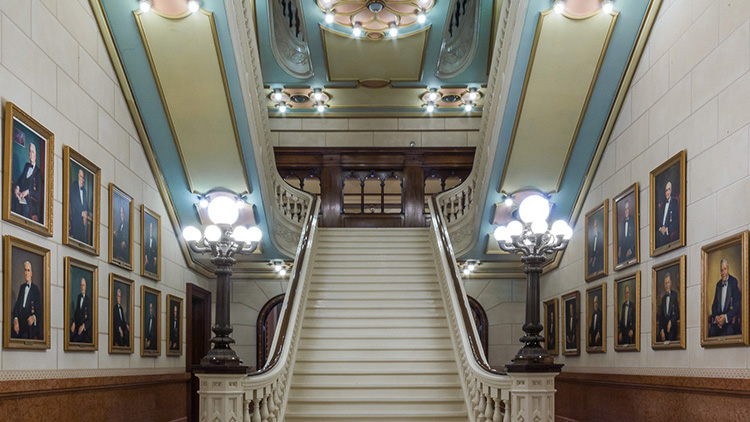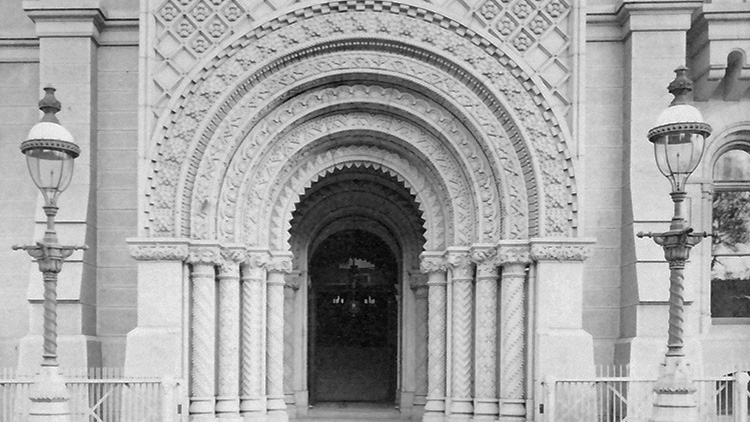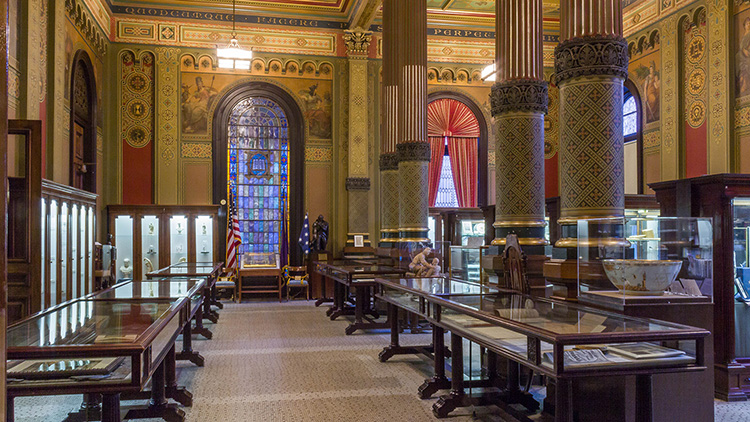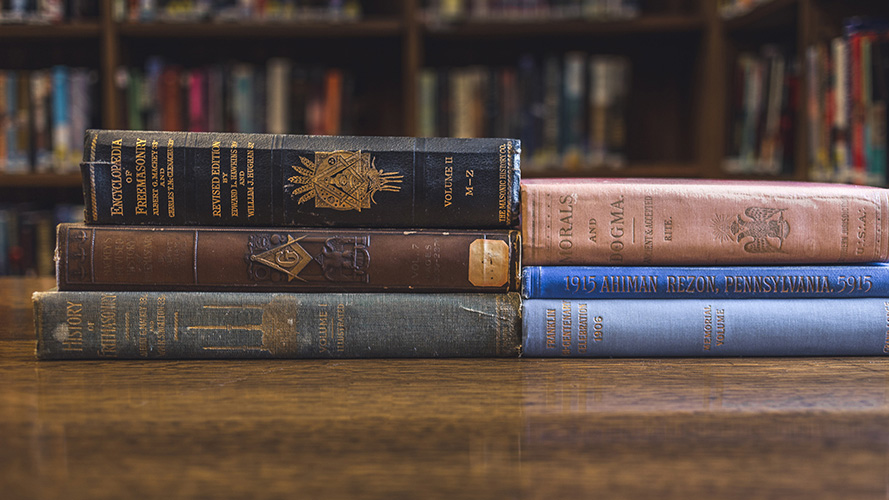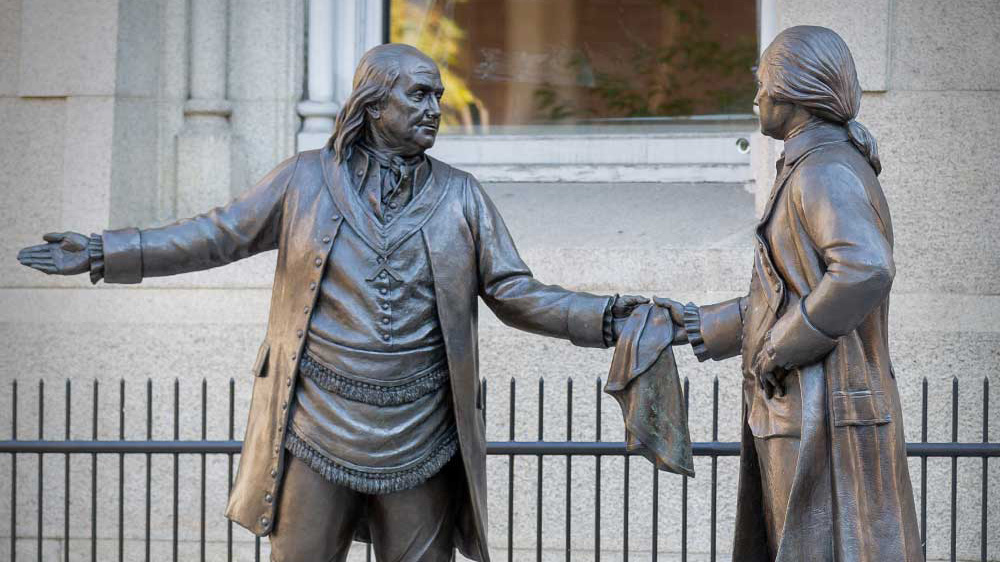Museum
About the Museum
Founded in 1908, the museum was dedicated by Brother John Wanamaker, a prominent Philadelphia merchant who served as the first Chairman of the Library Committee. The museum’s collection consists of more than 30,000 items. Some of these include a Masonic apron thought to be made for Brother George Washington, which was presented to the Grand Lodge of Pennsylvania in 1829 by the Washington Benevolent Society of Philadelphia; a petition signed in 1808 by 11 Freemasons in St. Louis, Louisiana Territory, including the famous explorer Merriweather Lewis, applying for a warrant to open the first lodge in that city; and Brother Benjamin Franklin’s Masonic sash, worn in 1782, when he was Venerable (Worshipful Master) of the Loge des Neuf Soeurs (Lodge of the Nine Sisters or Muses) in Paris and when he guided Brother Voltaire at his induction into the Masonic fraternity.
Visitors who prefer to visit our gift shop and museum, but not take a guided tour, can pay $5 for entry into the building. Library access is free.
Masonic Artifacts in the Museum
Videos
Michael Comfort, director of The Masonic Library & Museum, shares with us the trowel that was used in 1874 to dedicate City Hall in Philadelphia at their cornerstone ceremony.
Mike Comfort shares the solid gold invitation sent to President William McKinley in 1901 from the Knights Templar Commandery of California, only a few months before McKinley was assassinated.
Michael Laskowski, head archivist, shares some of the many aprons in the archive at the Library and Museum.
Museum Policies
Origins and Value of Masonic Artifacts
As a general policy, we can only do minimal research on Masonic artifacts and paraphernalia. There are many fine pieces of Masonic regalia, jewelry, artwork, china, furniture, medallions and commemorative gifts. There are also many items of great sentimental value, but which have no intrinsic worth. The Masonic Library and Museum is not in the market to purchase or broker the sale of Masonic artifacts. Further, we are not permitted to provide an appraisal service on such items, whether for sale or given as gifts to the Masonic Library and Museum. Antique dealers are best equipped to serve these needs.
Returning Masonic Regalia
If you want to return Masonic regalia – swords, Past Master jewels, aprons, etc. – to the originating Masonic organization, we can connect you with the appropriate official. Please understand that, as a rule, these items will not be purchased, but will gladly be received for their sentimental value.
Rare and Historical Items
As with Masonic artifacts, the Masonic Library and Museum is typically not in the market to purchase or broker the sale of rare and historic artifacts. Further, we are not permitted to provide an appraisal service on such items, whether for sale or given as gifts to the Masonic Library and Museum. We advise contacting a local antique dealer with these inquiries.

